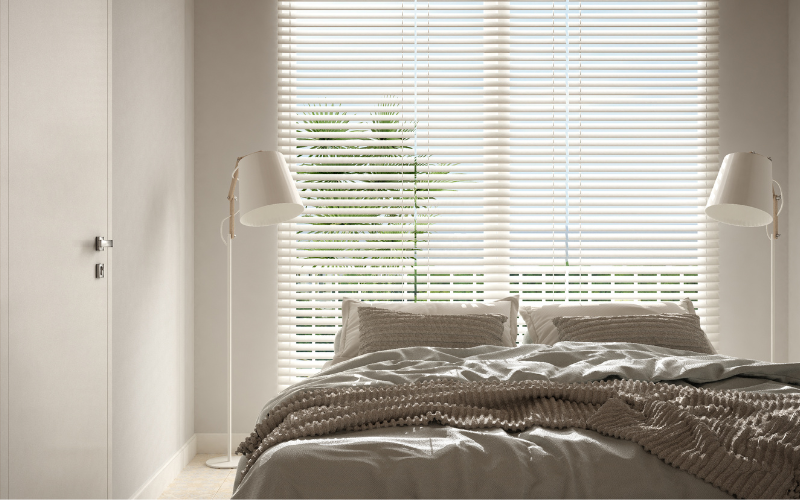Introduction

Our bed—an oasis of comfort and relaxation. But what happens when this comfort spot merges with the demands of our work lives? The debate over whether working in bed is a stroke of genius or a recipe for disaster has sparked countless discussions. From the allure of flexibility and coziness to the perils of blurred boundaries and potential productivity pitfalls, the 'Working in Bed' debate is a hot topic. So what are some of the factors we need to consider to determine our working in bed lifestyle would be a resounding 'YAY' or a cautious 'NAY'?
First, The YAYs

Comfort
Having our bed functioning as our back and leg rest is sure to enhance the comfort of our work from bed experience. Working in bed also allows you to choose your working position. You can sit up, recline, or even lie down, which might help alleviate discomfort or strain from prolonged sitting.
Furthermore, working in bed eliminates the need to move to a designated workspace, making it a convenient choice, especially for tasks that don't require much movement or specific equipment
Convenience
No make-up, no shaving, you don't even have to change out of your pyjamas unless you have a video meeting. Undoubtedly, the convenience of working in bed presents an attractive proposition. It transforms a personal space into a versatile workspace without the need for a daily commute or the establishment of a separate office area, requiring minimal preparation, eliminating the time-consuming rituals of organising a designated workspace.
The bed's adaptability becomes evident, accommodating various working postures—from sitting up against a pile of pillows to reclining or even lying down. For tasks not reliant on specific equipment or environmental conditions, this convenience proves invaluable, fostering a sense of ease and flexibility in tackling professional responsibilities. Additionally, the familiarity and comfort of the bed can enhance relaxation, potentially alleviating stress during work hours. The sheer convenience of seamlessly transitioning between work and leisure within the comforting confines of one's bed is undoubtedly a tempting prospect, allowing you to wake and work on the go, saving yourself more rest and me time.
Increased Productivity (for some)
The comfort of our bed provides us with some form of relaxation, which allows us to be more creative, and by saving the need to commute to work also helps elevate your mood which in turn, contributes to a better working attitude and environment.
Now, The NAYs

Your sleeping nest is now your work station
The mingling of work and relaxation, without a clear demarcation between professional duties and personal repose, can significantly impede the crucial separation needed for optimal rest. This blurring of boundaries not only affects one's ability to unwind but also poses a substantial threat to the attainment of high-quality sleep. The amalgamation of work-related stressors and the typically ideal space of rest can lead to an overlapping mental landscape, where the mind struggles to disengage from professional concerns, hindering the relaxation necessary for a restful slumber. Consequently, this conflation may disrupt the circadian rhythm, triggering sleep disturbances or, in severe cases, insomnia. The absence of a distinct boundary between work and rest within the same spatial context, particularly the bed, challenges the brain's ability to transition effectively between the two states, potentially compromising the rejuvenation and essential restorative functions associated with uninterrupted, restful sleep.
Comfort might turn nasty overtime
Extended periods spent working in bed pose a risk to one's posture and ergonomics, potentially resulting in discomfort and strain across the neck, back, and wrists without adequate support. The absence of proper ergonomic alignment while working in bed may lead to a compromised physical state, contributing to musculoskeletal issues due to prolonged strain. This makeshift setup lacks the ergonomic considerations essential for sustained productivity and health during extended work hours. Consequently, the absence of appropriate support in this setting may exacerbate postural issues and discomfort, ultimately challenging the feasibility of utilizing the bed as a viable long-term workspace.
Creativity compromised overtime with added comfort
When the environment becomes excessively comfortable, the propensity to maintain a high level of engagement and attentiveness may decrease. This decline in productivity often stems from a sense of complacency induced by the relaxed setting, where the mind, amidst comfort, might wander or lose its drive to remain focused on tasks at hand. The comfort of the bed, while initially appealing, can inadvertently sabotage productivity by fostering a state of relaxation that isn't conducive to sustained mental acuity and task-oriented efficiency. Consequently, this lack of a conducive work environment, albeit comfortable, may pose challenges in maintaining optimal productivity levels and sustaining motivation over extended periods.
The Borderline

When opting to work in bed, it's essential to set boundaries and establish a routine to maintain a healthy balance between work and rest by maintaining a designated workspace within your bed to help mitigate some of the potential downsides.
Begin by delineating specific timeframes for work and rest, creating clear boundaries to prevent work from encroaching on leisure time. Establishing a consistent routine reinforces this separation, fostering a disciplined work ethic while preserving relaxation periods. Integrate regular breaks into your work schedule to rejuvenate both mind and body, preventing burnout and maintaining focus. Employing ergonomic aids such as supportive pillows or a laptop stand ensures optimal posture, reducing physical strain during extended work sessions. Moreover, designate a specific area within your bed as a workspace, psychologically distinguishing it from the restful sleep zone. By adhering to these practices, you can maximize comfort without compromising productivity, fostering a conducive environment for both work and relaxation.




Leave a comment
This site is protected by hCaptcha and the hCaptcha Privacy Policy and Terms of Service apply.